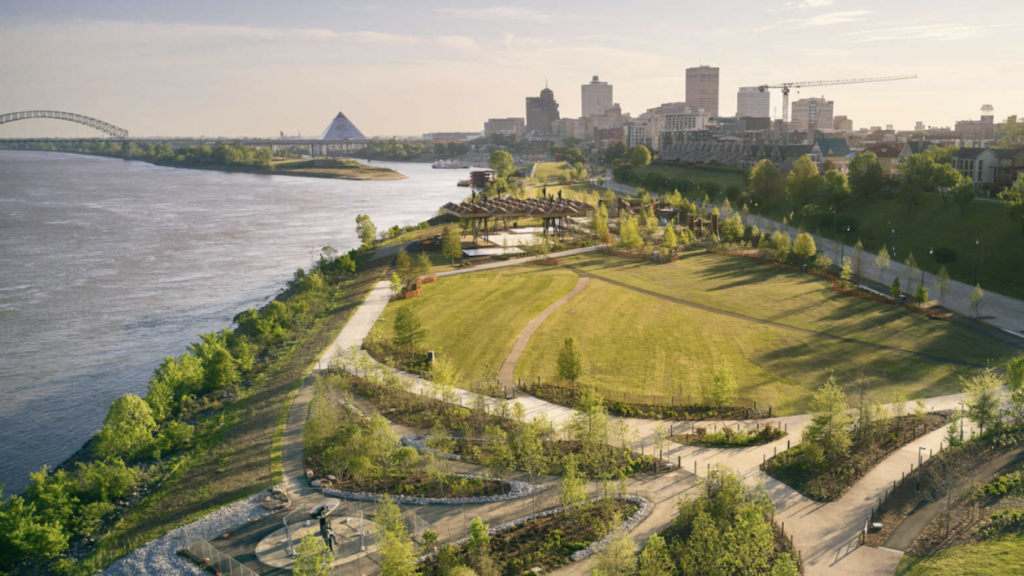Ecosystems as Infrastructure: A New Way of Looking at Climate Resilience
Posted
Last Updated
By e360.yale.edu.
When people think of landscape architecture, small-scale recreational spaces like urban parks, gardens, and golf courses may come to mind. MacArthur “Genius Award” winner Kate Orff has a grander and more ecologically ambitious vision.
Orff, director of Columbia University’s Urban Design Program, believes that architects should do more than just create beautiful spaces: They also need to work with nature to create resilient living environments that both help to knit human communities together and protect them against the ravages of climate change.
SCAPE, the New York City-based design firm that Orff founded in 2007, is currently working in Louisiana on a project that will counter sea level rise and land loss in the Mississippi River Delta. SCAPE has also partnered with the Atlanta Regional Commission to create a 125-mile-long trail and greenway along the Chattahoochee River, which aims to bring racially diverse communities along its banks together, based on their shared love of the river.
In an interview with Yale Environment 360, Orff said that it is not enough simply to restore natural systems to their former condition. “There is no ‘pure nature’ that’s outside of us, untouched up there in the foothills somewhere,” she said. “We’ve ‘made’ the world what it is already, so now we need to take a very, very strong hand in the remaking. … A big part of climate adaptation may simply be unbuilding what we’ve already built.”
Yale Environment 360: What is the role of landscape architecture in an era of climate change?
Kate Orff: Since I went to school in 1997, the world has radically changed, and so have our views on what is necessary and important.
Read more at e360.yale.edu.

